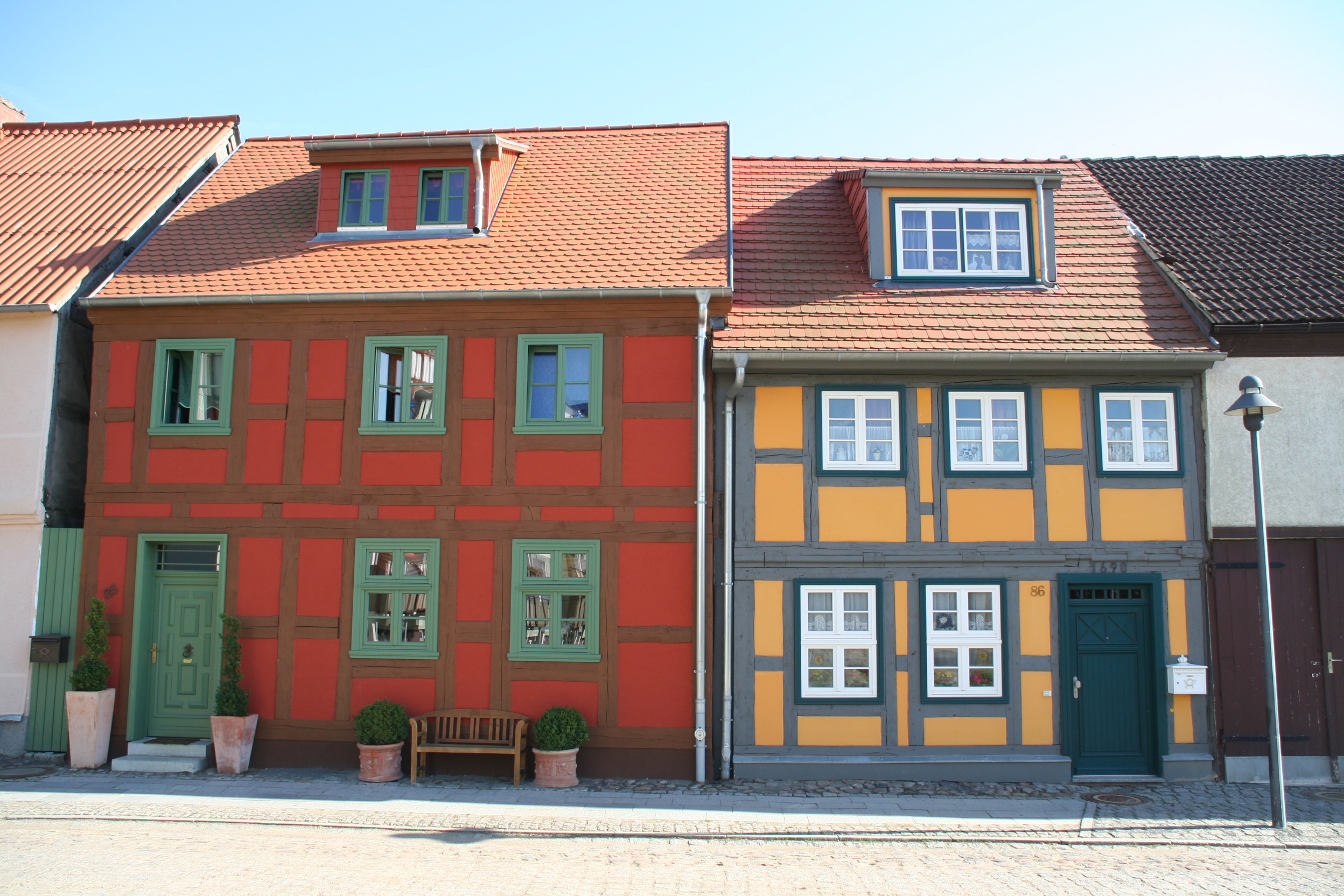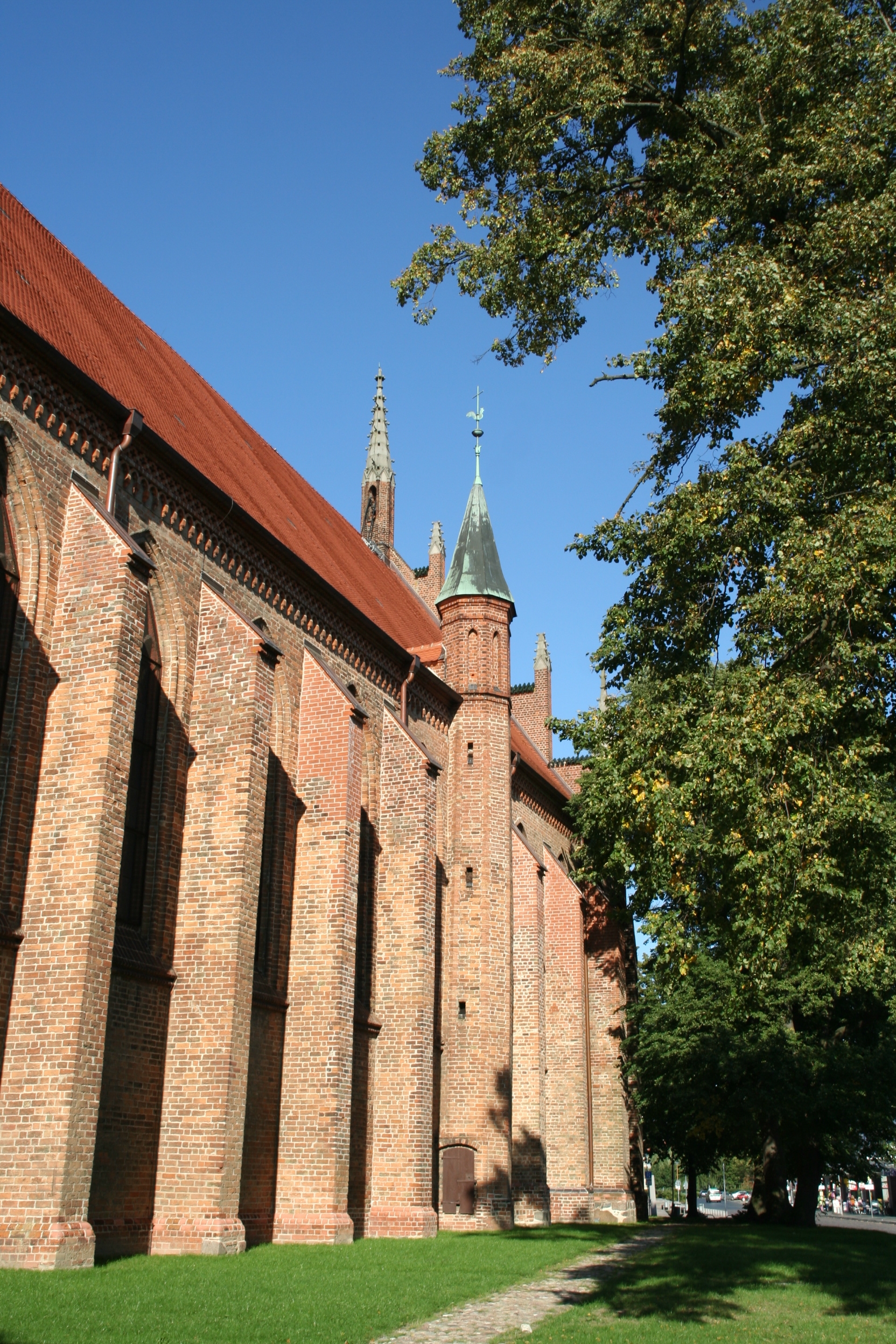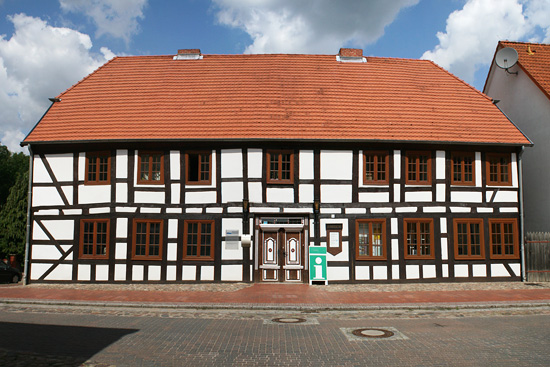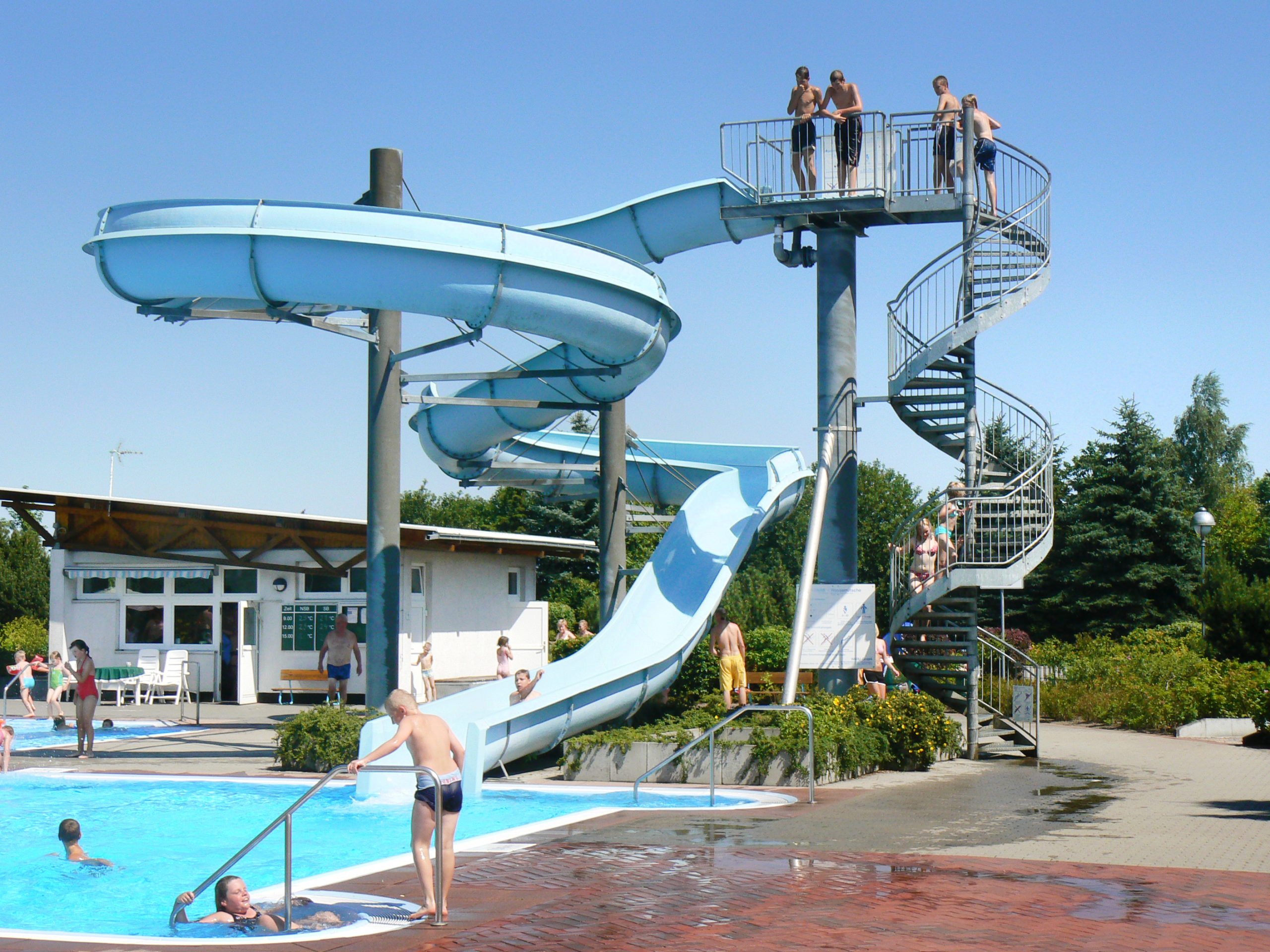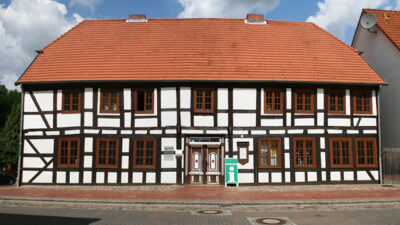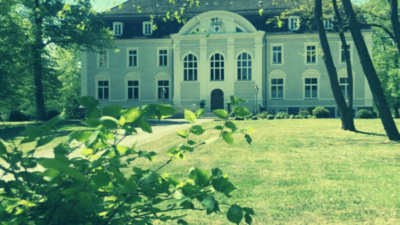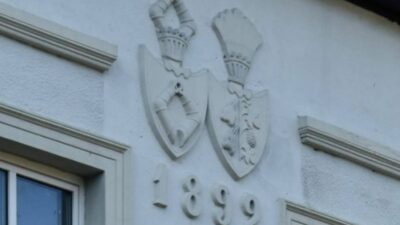City of Friedland
Go on a walk to Friedland’s historical city gates on a leisurely tour of the city or simply switch off at the public outdoor pool.
17098 Friedland
Tel: 039601 2770
stadt@friedland-mecklenburg.de
https://www.friedland-mecklenburg.de/
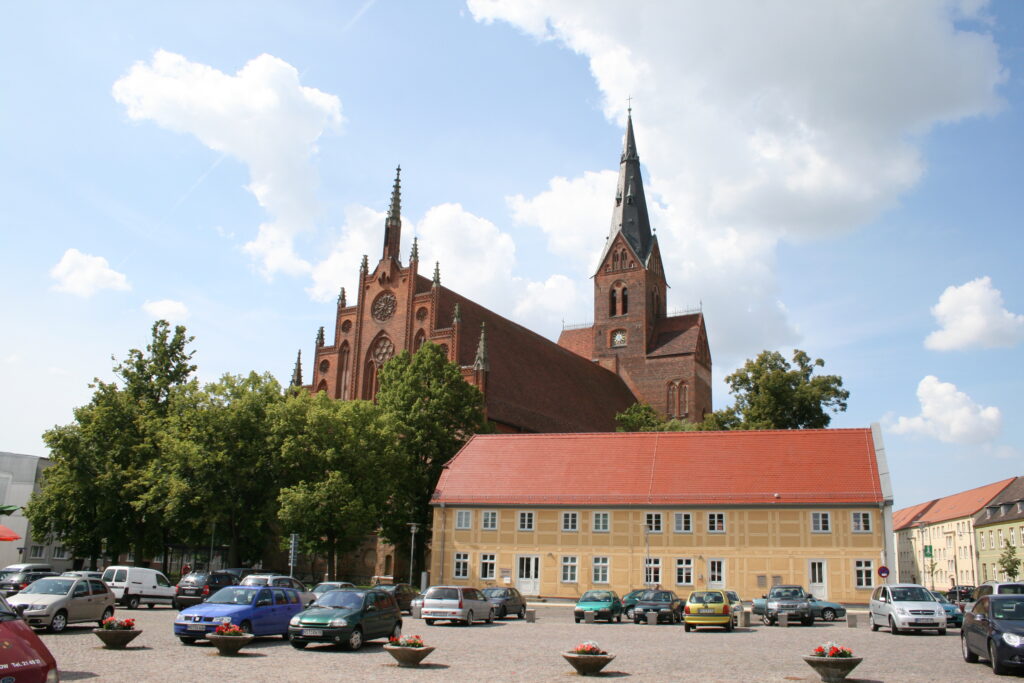
In 1244 the Margraves of Brandenburg founded their first town in the newly acquired land of Stargard, Vredeland. But even before that the region had a rich settling history, once a slavonic castle complex with associated settlement stood where what is now the modern town.
Friedland, endowed with numerous privileges and located at an important junction of trade and military routes, quickly developed into a prosperous city. The close border to the then enemy state of Pomerania, made defense difficult and subjected inhabitants to repeated attacks and sieges.
Industrialisation made Friedland an important player in 19th century Mecklenburg-Strelitz. Tiles and starch were manufactured here, but it was also an important producer of dairy and sugar, iron foundries and the railway were established early on. After the ruins of Word War II, citizens created an almost entirely new city from what was essentially nothing. But due to the economy of scarcity during the GDR, at least 30% of the inner city could not be saved until the wall came down in 1989.
Today we see an impressive change – the “grey mouse” has been turned into a handsome town. With its city centre and cultural facilities, Friedland is not only attractive to the people from the surrounding villages. The museum in town is a good starting point for any visit, located in one of the oldest residential buildings in the city and housing exhibitions from prehistory to the middle ages, a historic smithy, an archive and tourist information.
Fangelturm (Fangel tower)
In the Middle Ages, the Fangelturm was a defense tower of the city wall that surrounded the city. During the “Bride War” in 1453, the upper part of the tower was destroyed by a stone projectile and not rebuilt. After that, the structure, as the name Fangelturm suggests, was used as a prison.. From 1909 to 1911 the city of Friedland rebuilt the tower and installed a pressure vessel to use the structure as a water tower. After years of vacancy, it was reconstructed by the city in 1997 and converted into a viewing tower.
The structure is 37 meters high, the viewing platform reaches a height of 27 meters, which offers a lovely view of the town. The ascent is via 147 steps. Changing exhibitions are shown on the inner levels, which include urban development and redevelopment, student paintings, and much more. You can get the keys to the tower at the Friedland City Museum.
Neubrandenburger Tor (Neubrandenburg Gate)
The Neubrandenburger Tor (formerly Burgtor, completed 1450), got its name from the immediate location in the former Slavic castle and is one of the most beautiful buildings of the era of Northgerman Brick Gothic. In 1928, the museum of local history opened its doors here for the first time. From 1945 to 1951, the museum was unsupervised and many valuable pieces were lost. The museum was reopened after the war and moved to Mühlenstrasse in 1984 and finally in 1993 the external repair of the gate took place. With the help of the city renovation funds, the roof, the corner towers and the facade could be repaired.
Watermill
The damming of the Datze created the mill pond, which made it possible to operate a water mill. After a dam broke in 1830, the mill could not be used for a record breaking 16 weeks, or so history would have it. Additionally, a sawmill and an oil mill belonged to the complex until the 20th century. In 1945 the watermill became a temporary hospital for the war wounded . A feed plant operated by LPG worked in the old mill until 1978, after which it was used for grinding wheat. The old watermill was established as a listed building in 1987.
Public Pool
Eine besondere touristische Attraktion ist das Schwimmbad welches 1975 eröffnet wurde.
A special tourist attraction is the swimming pool which was opened in 1975.
After extensive reconstructions in 1990, it has a 50-meter-long water slide, a heated hall with relaxation loungers, a swimmer and non-swimmer pool heated by solar energy. A wide range of sports options and snack bars contribute to increasing the attractiveness.
Open May through August
Mon – Fri 1 pm – 8 pm
Sat, Sun and through summer holidays Mecklenburg West-Pomerania 10 am – 8 pm
September
Mon – Fri 1 pm – 7 pm
Sat, Sun and through summer holidays Mecklenburg West-Pomerania 10 am – 7 pm
Last admission 30 minutes before closing time
St. Mary’s Church (Sankt Marien Kirche)
The mighty three-aisled brick hall church was built during the 14th and 15th centuries, on the ground of an earlier ecclesiastical building dating back to the 13th century. The great fire of 1703 destroyed the church down to the lower masonry, it was then quickly reconstructed, rebuilding efforts lasted until 1714 when the newly built church was ceremoniously consecrated. The original interior from that time has been preserved almost entirely. The organ was completed in 1744, but in 1934 a new organ built by the renowned organ maker Sauer was moved from Berlin to Friedland.
The structure has undergone extensive repairs and expansions over the years. Today, concerts and various other cultural events are being held here and it is open to visitors.
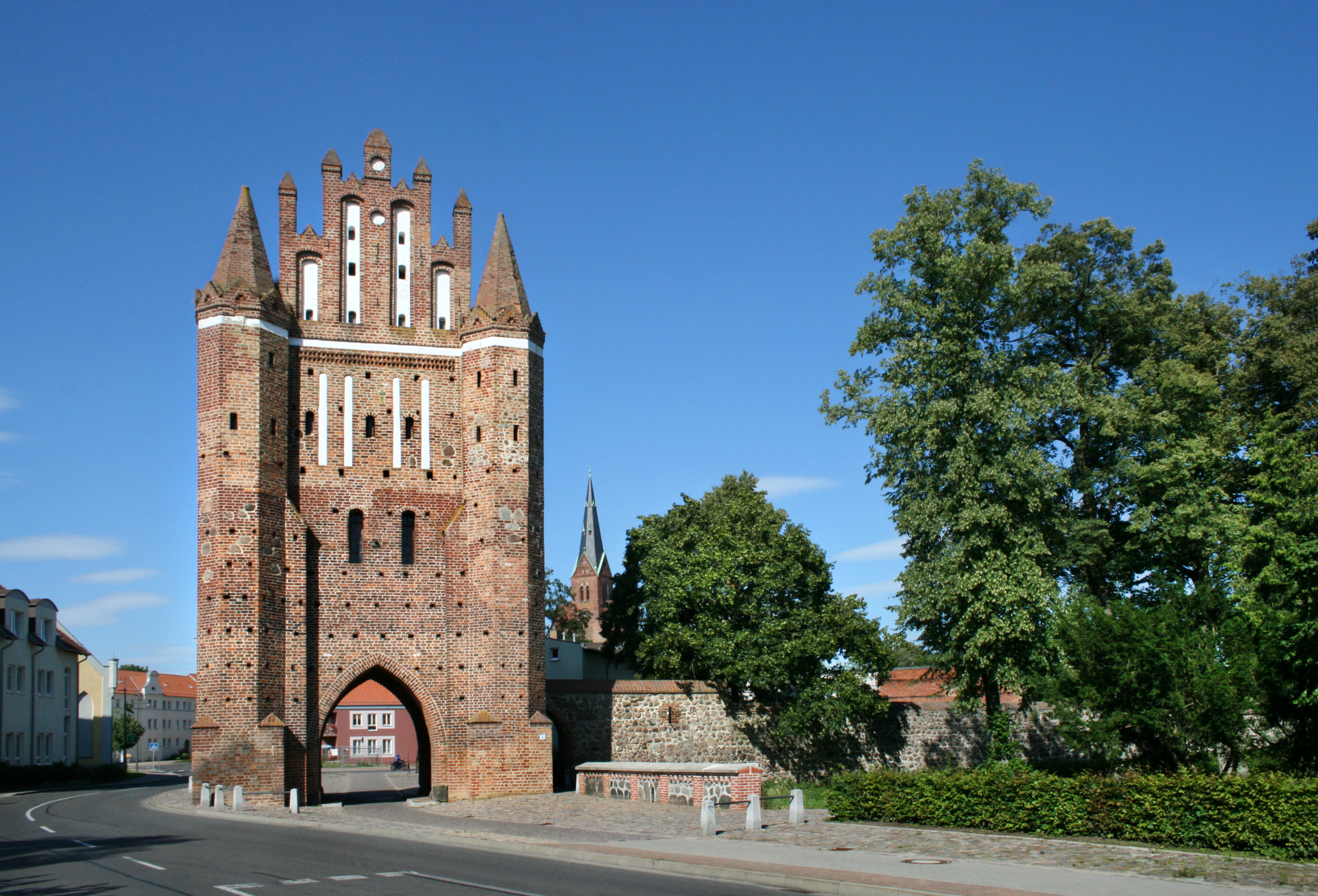
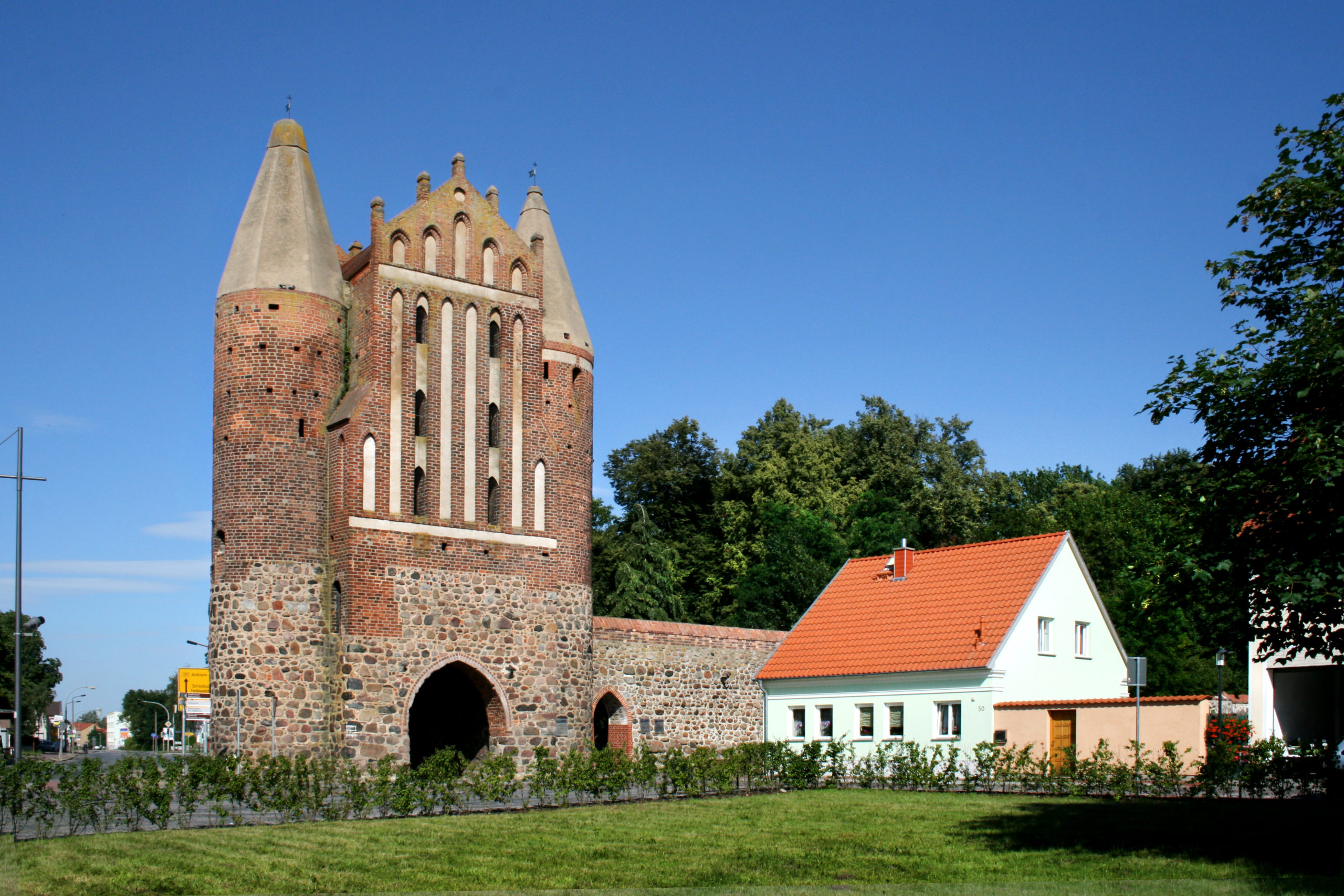
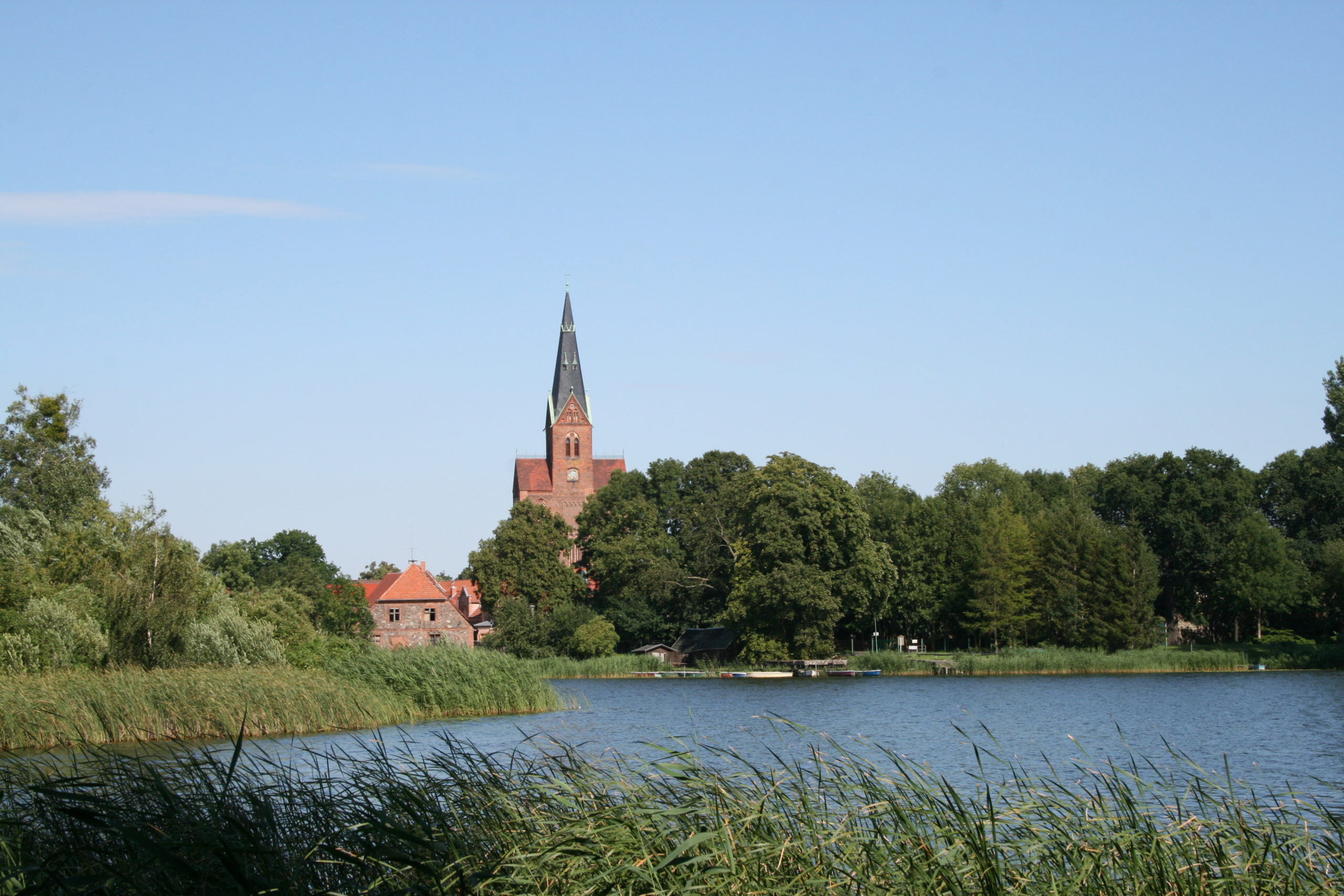
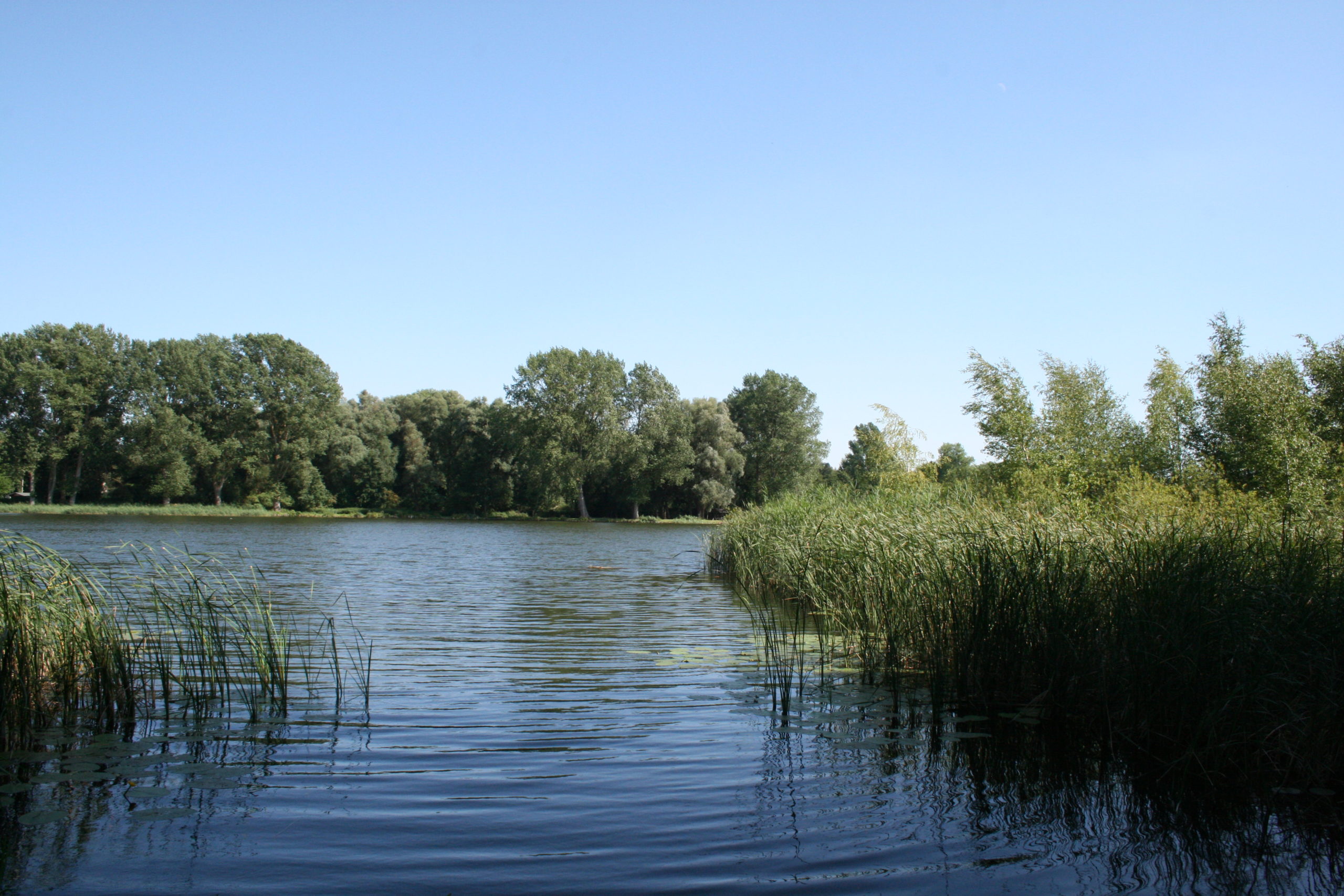
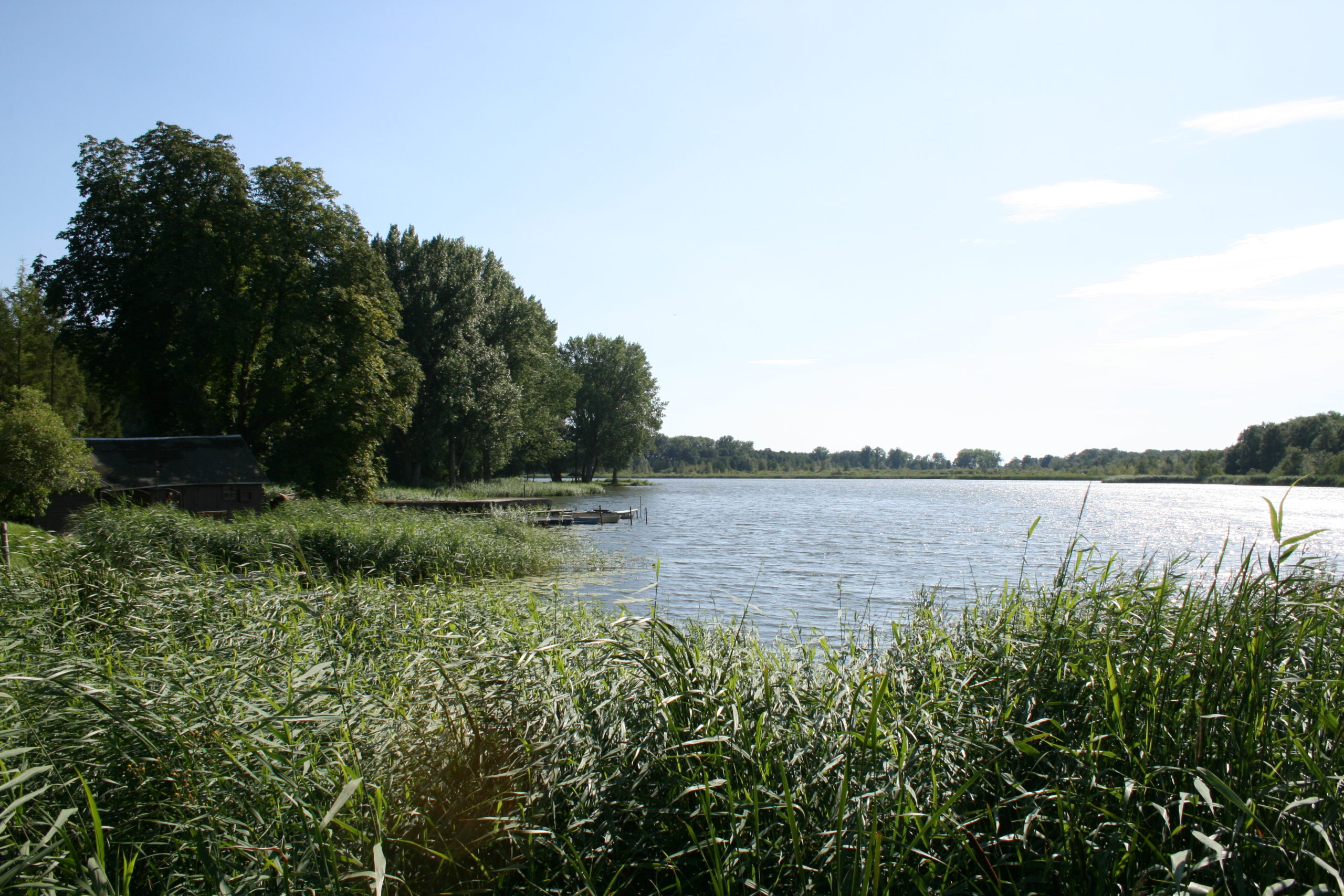
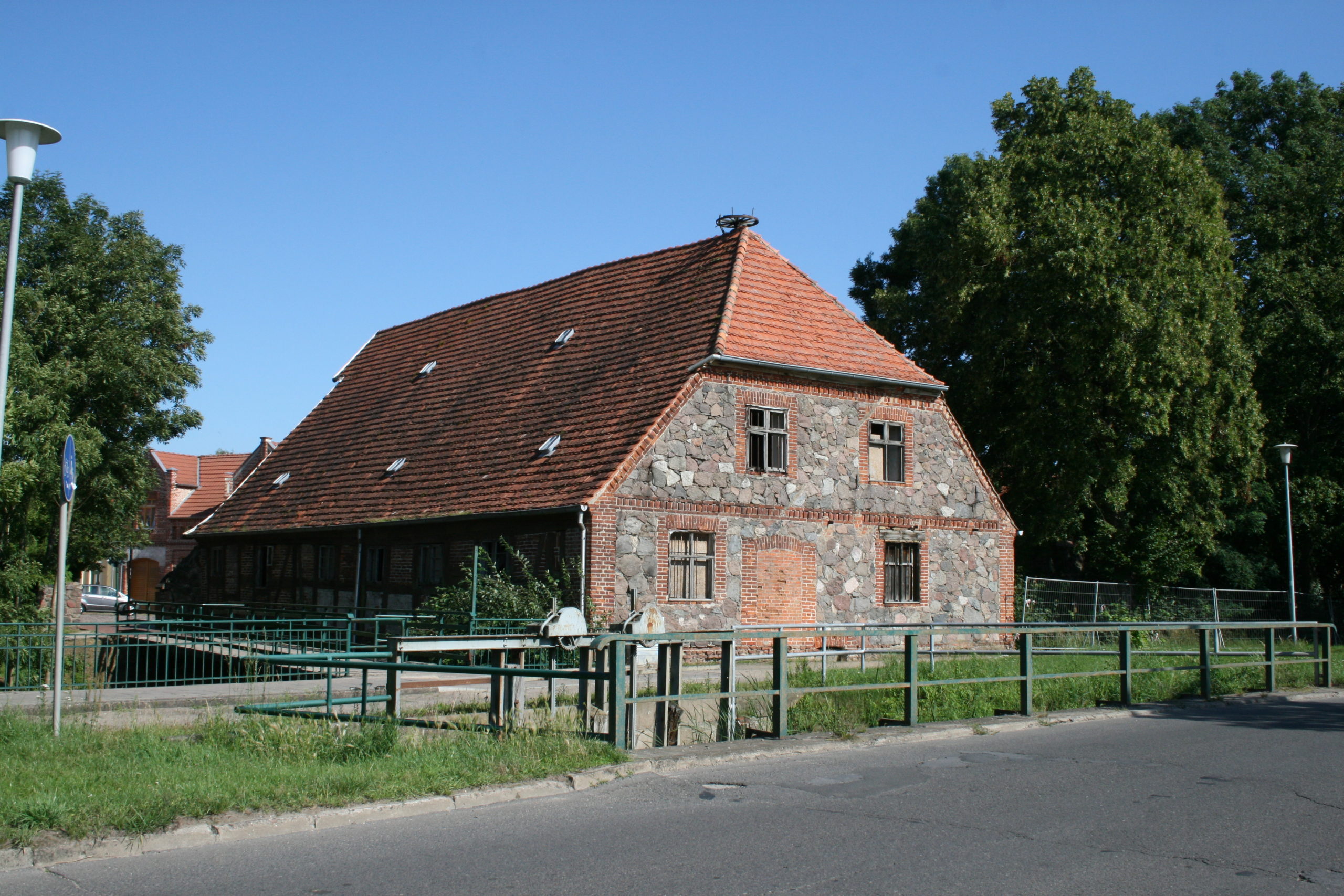
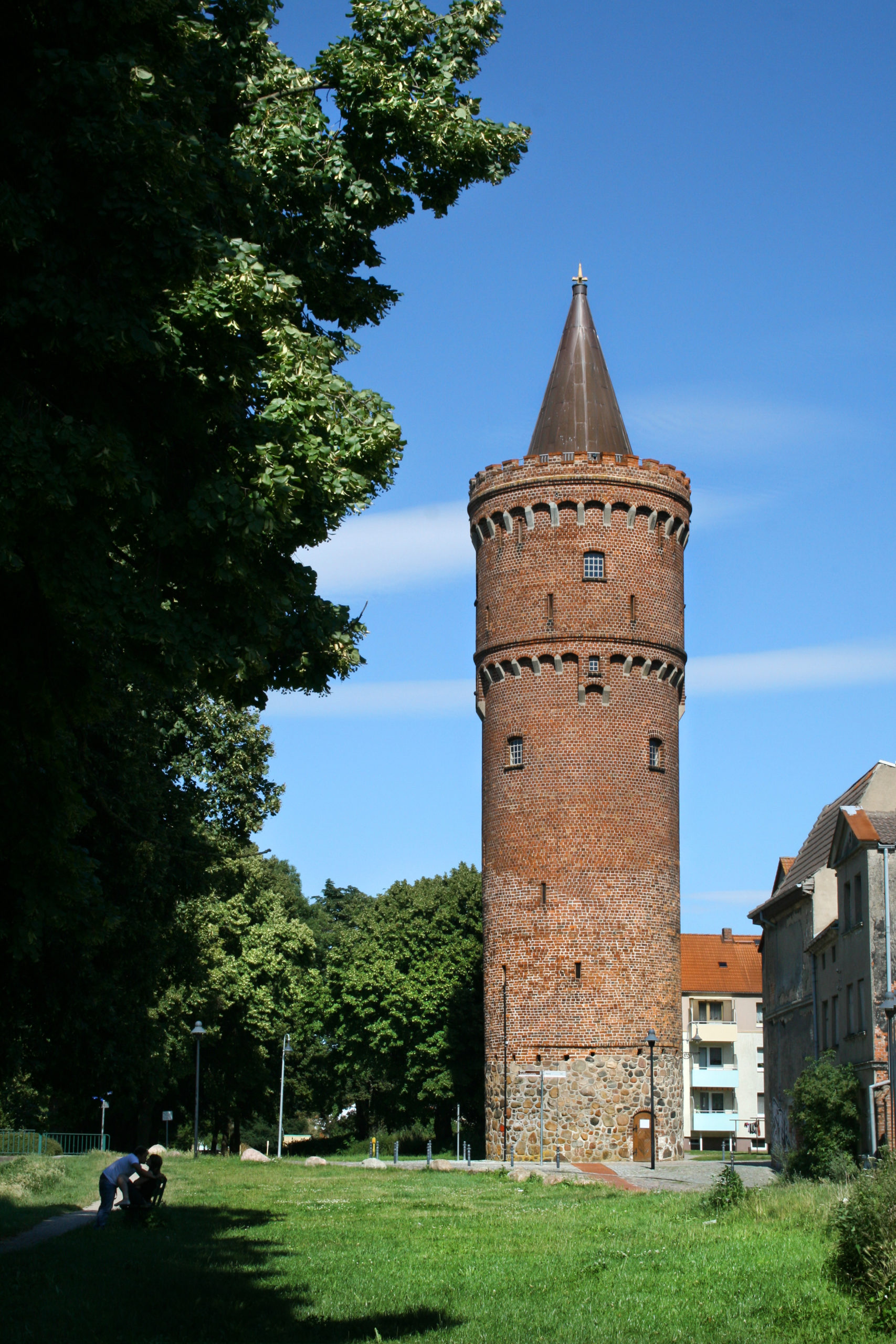
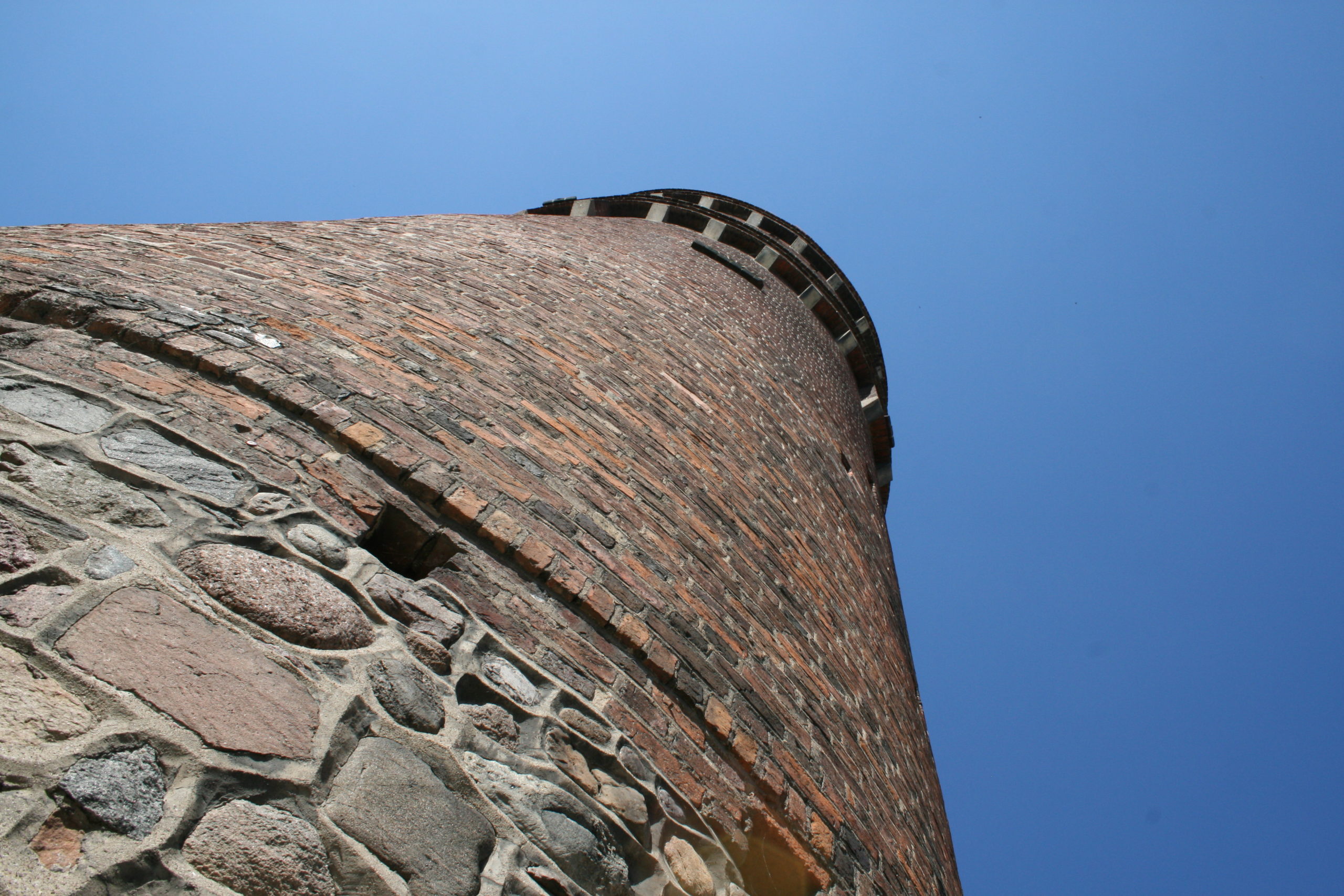
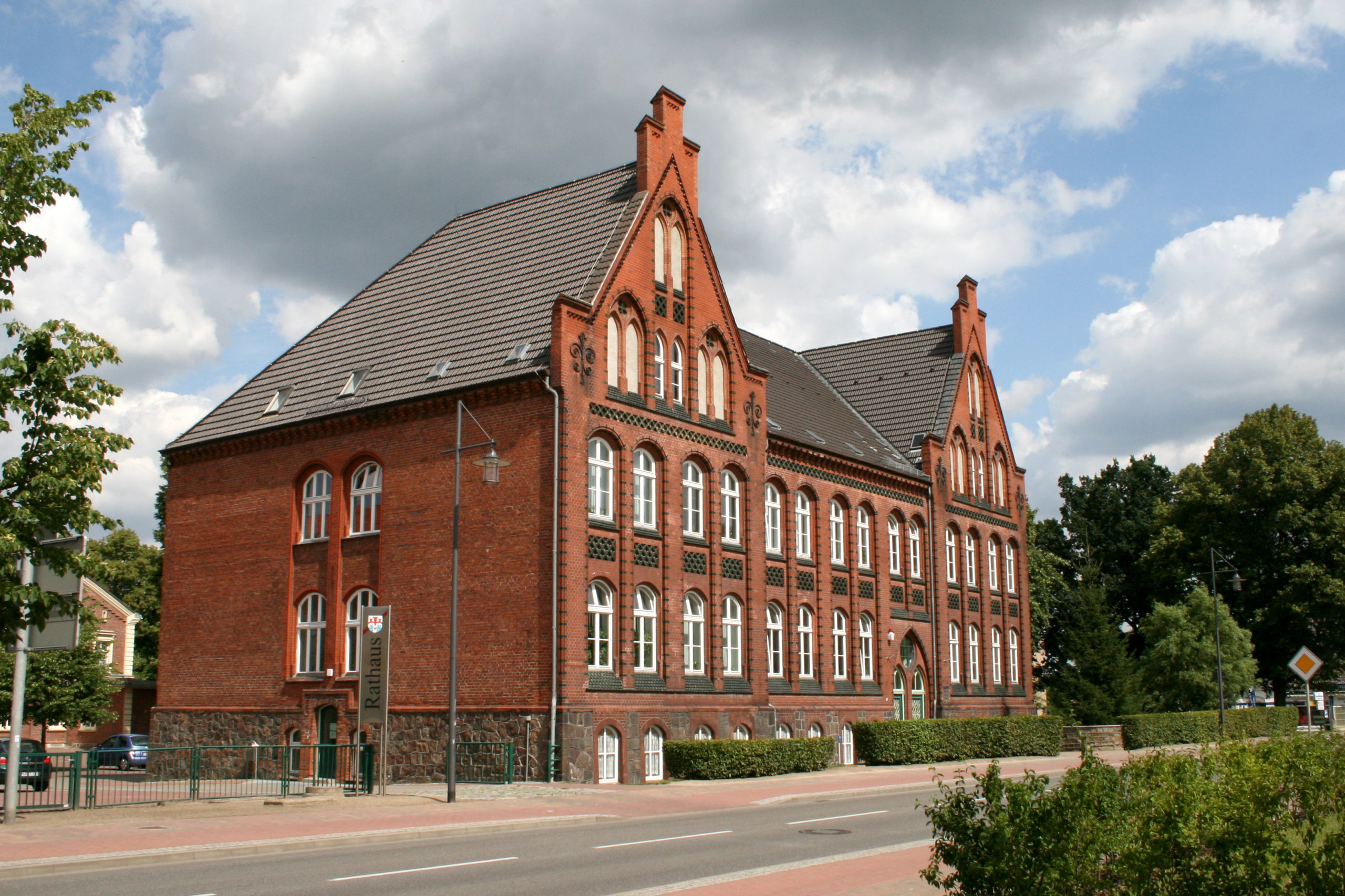
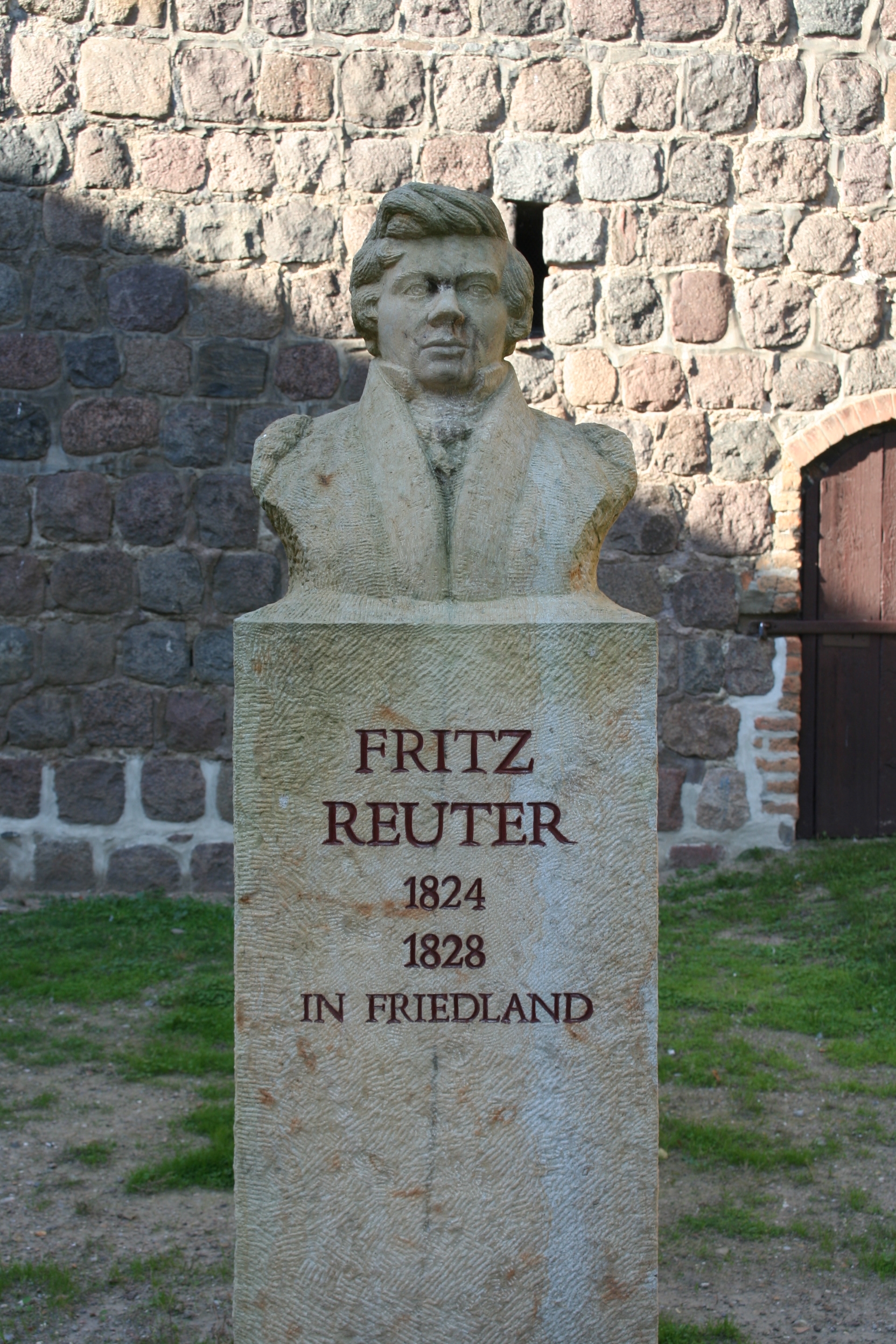
language, was a student in Friedland
